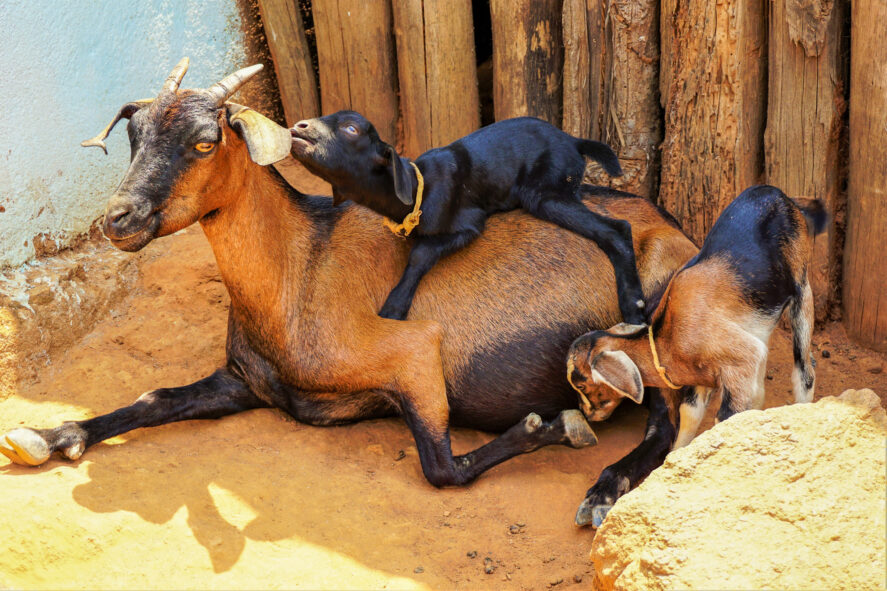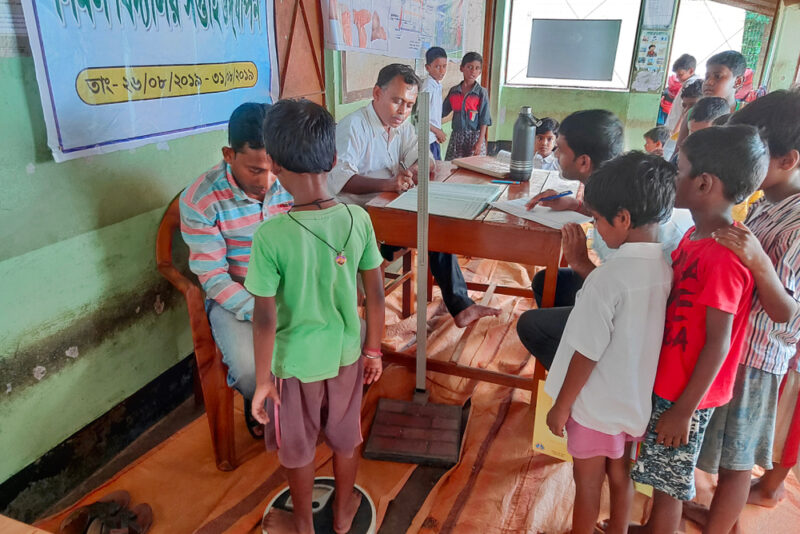Why Aren’t More Farmers Using Artificial Insemination for Goat Rearing?

As a source of income generation during crop failures, goat-rearing offers many advantages to smallholder farmers in India. But a lack of established markets and infrastructure leaves many farmers dependent on natural breeding practices instead of the more beneficial artificial insemination. A new Tata-Cornell Institute for Agriculture and Nutrition (TCI) study aims to improve farmer livelihoods by assessing the benefits of artificial insemination, as well as the factors affecting farmers’ decisions to adopt the practice.
Goats in India
India has the world’s second-largest goat population. Goats require less investment, space, and management compared to large ruminants like cattle and buffaloes. They are resilient and adaptable, as they can thrive in arid conditions with less water and fodder. Hence, they are efficient converters of low-quality forage into valuable products such as milk, meat, and fiber. This makes them an invaluable source of income generation, as even during times of financial distress (e.g. drought or crop failure), they can be sold for meat or breeding. As a result, 70% of the goats in India are reared by economically and socially marginalized farmers.
Despite the numerous advantages of goat rearing, improving goat productivity in rural communities remains a challenge.
The government of India is cognizant of the importance of goat rearing, and the role it plays in providing supplementary income and livelihood to millions of resource-poor farmers. Several government programs provide goats to small farmers. Selected families typically receive a number of female goats and bucks to assist with the traditional practice of the natural breeding of goats.
However, since these schemes rely on natural breeding, inbreeding and the transmission of sexually transmitted diseases impede their effectiveness. Despite the numerous advantages of goat rearing, improving goat productivity in rural communities remains a challenge.
The rise of artificial insemination
To address this issue, the implementation of artificial insemination has emerged as a viable solution. Through artificial insemination programs, farmers can gain access to superior genetic material and desirable breeding traits that contribute to enhanced productivity, including increased milk production, higher meat yields, and improved disease resistance. Moreover, artificial insemination offers a way to overcome the limitations of inbreeding and disease transmission associated with natural mating. However, unlike large ruminants, the adoption of artificial insemination in small ruminants like goats has been relatively limited.
Artificial insemination for goats does not offer the same level of return as that for large ruminants, leading to weaker demand.
Artificial insemination has enjoyed substantial success in large ruminants in India. This is primarily due to the economic significance of these animals for the dairy industry. Demand for milk and dairy products is substantial in India and there is an established market with organized milk collection and processing systems. Farmers who own large ruminants are willing to pay for artificial insemination technologies to enhance milk production because they perceive higher economic benefits (returns from the sale of milk) relative to the cost (around Rs 100-200). The demand for higher milk production and increased profitability has spurred the development of well-established infrastructure, including semen production and storage facilities, artificial insemination centers, and trained personnel.
In contrast to large ruminants, goats are predominantly reared by resource-constrained smallholder farmers in India. These farmers raise goats primarily for meat, with milk production a secondary consideration. The markets for both goat meat and milk are underdeveloped in India. As a result, the cost of artificial insemination is not just perceived as expensive by smallholder farmers, but also incommensurate with the economic benefits. Artificial insemination for goats does not offer the same level of return as that for large ruminants, leading to weaker demand.
Improving adoption of artificial insemination for goats
TCI’s study, in partnership with BAIF, raises awareness of and provides artificial insemination, along with other healthcare services, free of cost to 800 participating households across four states in India—Bihar, Odisha, Rajasthan, and Maharashtra. If successful, the project has the potential to increase kidding rates and improve birth weights of new-born goats, giving the farmers higher returns in the future.
The objective of the study is to assess the benefits conferred to smallholder farmers by artificial insemination for goats when compared to natural breeding. The study also attempts to understand the factors influencing farmer willingness to adopt artificial insemination and the differences between adopters and non-adopters. The study can pave the way for more effective and sustainable goat breeding practices, positively impacting the livelihoods of small and marginal farmers.
Payal Seth and Bharath Chandran C are research consultants at the TCI Center of Excellence in New Delhi.
Featured image: A female goat relaxes with its kids. (Photo by Maureen Valentine/TCI)





